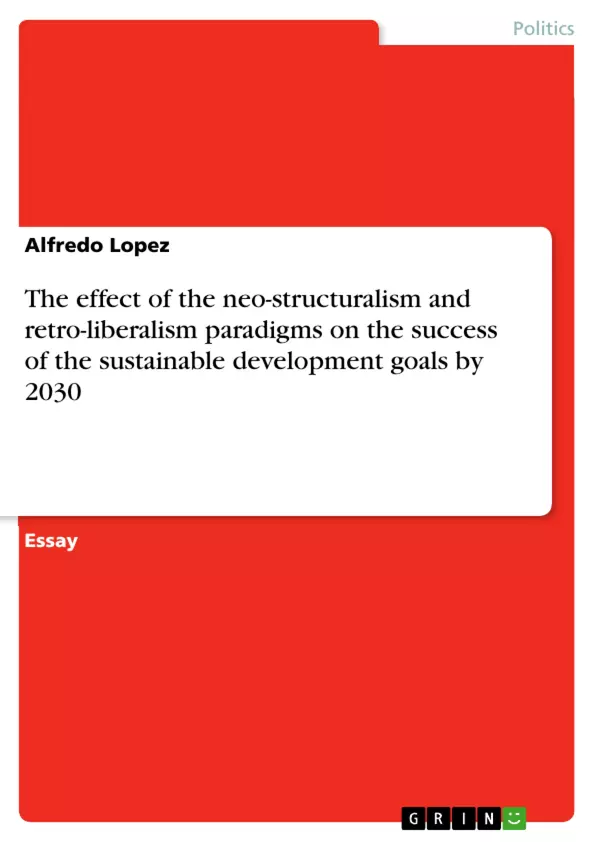This essay will briefly describe the main features of two different policy landscapes and also will respond the following question: How may the neo-structuralism and retro-liberalism paradigms affect the successful achievement of the sustainable development goals by 2030? Finally, this essay will conclude with a short summary of the main described points. From 1776 to today, different forms of economic and social development have been promoted. For example, from 1776 to the 1920s emphasis was placed on the classical economics; after the 1930s to 1970s the Keynes's economic model was widely used. Further, in 1950 the theory of modernisation became popular and since then other models and theories that promote development have emerged. Example of these are Marxism, neo-Marxism, liberalism, neoliberalism, post-neoliberalism among other economic and development models.
Normally these economic models are made up of a set of economic and development policies that are known as aid paradigms or aid regimes. Two of these aid paradigms are the neo-structural policy landscape and the retro-liberal policy landscape which aim to seek economic development. There are different criteria to define the concept of neo-structuralism, but the most common definition is employed by French-Davis (1988) who explains it as "the set of productive and management structures that facilitate economic dynamism and greater equality, along with strategies and policies that allow for greater national autonomy". Markedly, the neo-structuralism is a continuation of the basic stance of structuralism, with some adjustments derived from new realities both internal and international.
Inhaltsverzeichnis (Table of Contents)
- The effect of the neo-structuralism and retro-liberalism paradigms on the success of the sustainable development goals by 2030.
- The neo-structural policy landscape paradigm and its features
- The retro-liberal policy landscape paradigm and its features
- The neo-structural and retro-liberal paradigms and its effect on the Sustainable Development Goals
Zielsetzung und Themenschwerpunkte (Objectives and Key Themes)
This essay aims to examine the influence of neo-structuralism and retro-liberalism paradigms on the success of achieving the Sustainable Development Goals (SDGs) by 2030. It will analyze the features of these two distinct aid paradigms and explore their potential impact on the implementation and effectiveness of the SDGs.
- The characteristics and principles of neo-structuralism.
- The characteristics and principles of retro-liberalism.
- The potential effects of neo-structuralism on achieving the SDGs.
- The potential effects of retro-liberalism on achieving the SDGs.
- The interplay between both paradigms and their combined impact on the SDGs.
Zusammenfassung der Kapitel (Chapter Summaries)
- The essay begins by outlining the historical context of development models, highlighting various approaches from classical economics to neoliberalism. It then introduces the concept of aid paradigms and specifically focuses on the neo-structural and retro-liberal policy landscapes.
- The first chapter delves into the neo-structural policy landscape paradigm, emphasizing its focus on public policy, empowerment of vulnerable populations, and global solutions to poverty and sustainability. Examples like the Sustainable Development Goals and the OECD-DAC are presented to illustrate its principles.
- The second chapter examines the retro-liberal policy landscape paradigm, contrasting it with neo-structuralism. This paradigm prioritizes national action and interests, primarily through private sector involvement and partnerships.
Schlüsselwörter (Keywords)
Key terms and concepts explored in this essay include neo-structuralism, retro-liberalism, aid paradigms, sustainable development goals, public policy, private sector involvement, global solutions, national interests, empowerment, poverty reduction, and sustainability.
- Arbeit zitieren
- Alfredo Lopez (Autor:in), 2018, The effect of the neo-structuralism and retro-liberalism paradigms on the success of the sustainable development goals by 2030, München, GRIN Verlag, https://www.grin.com/document/470314



